|
Dove-in-the-Window
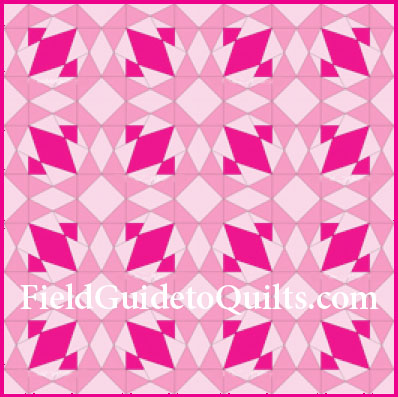 Dove-in-the-Window Dove-in-the-Window
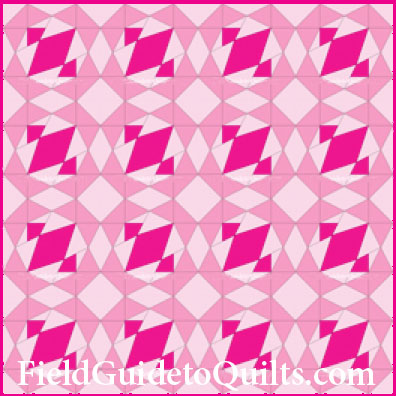 Dove-in-the-Window Dove-in-the-Window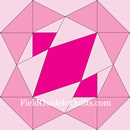 Dove in the Window
Finley, 1929 Dove in the Window
Finley, 1929
Dove-in-the-Window would also work well as a scrap quilt.
|
|
Lend & Borrow
 Lend & Borrow Lend & Borrow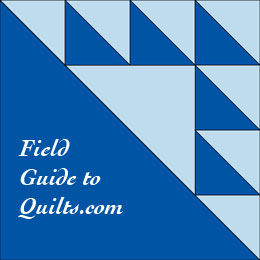 Lend & Borrow
Malone Lend & Borrow
Malone
Lend & Borrow
 Lend & Borrow Lend & Borrow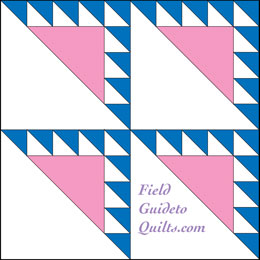 Lend & Borrow
Kansas City Star Lend & Borrow
Kansas City Star
1933
Rocky Glen/The Lost Ship/Indian Meadow/Little Saw Tooth/Lost Ship
This block usually goes by Lend & Borrow; its first publisher under that name was the Kansas City Star (1932).
Our graphic is in the colors recommended by the Star's quilt columnist, Evelyn Foland, who added, "The entire quilt is always made of the pieced blocks when this pattern is used."
Prior to that, Ruth Finley, in 1929, called it Rocky Glen and The Lost Ship.
|
|
Flamingos in Flight
 Flamingos in Flight
Cabot Flamingos in Flight
Cabot
1938
The pattern is made from four Lend & Borrow blocks arranged as we've shown below. Each block is set at a 180-degree turn from its neighbors.
It makes for such an interesting, emphatic diagonal pattern as a whole quilt that we almost included it with our diagonal blocks.
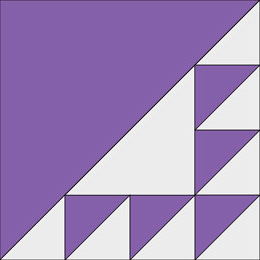 
  Flamingos in Flight is made of four Lend & Borrow blocks
Flamingos in Flight is made of four Lend & Borrow blocks |
|
Victory
   
   
   
    Another layout in dazzling patriotic colors
Another layout in dazzling patriotic colors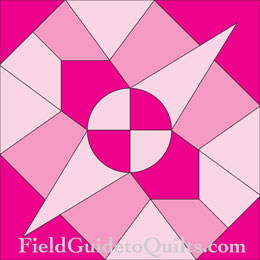 Victory
Stone, Victory
Stone,
1906
As much as we like the idea that the block celebrated the end of a war, it did not: 1906 was a normal year. Patriotic colors are not required.
We think, too, that the subtler shades make the design pop out a bit more than our red, white, and blue version.
|
|
Arrowhead Puzzle
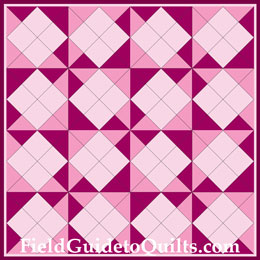 Arrowhead Puzzle (Brackman) Arrowhead Puzzle (Brackman)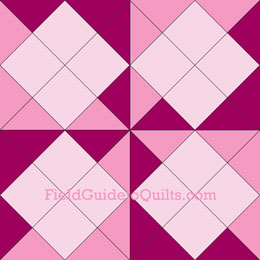 Arrowhead Puzzle
Brackman Arrowhead Puzzle
Brackman
|
|
Pinwheel Square
   
   
   
   
Pinwheel Square  Pinwheel Square Pinwheel Square
LAC, #231
1897
Another block from the Ladies Art Company, published as #231 in 1897, and the starting point for several other block designs covered below. |
|
Crazy Ann
   
   
   
   
Crazy Ann in just two colors
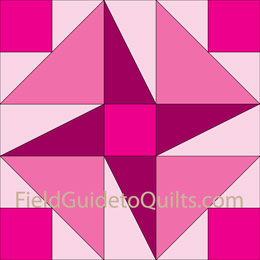 Crazy Ann
Finley, 1929 Crazy Ann
Finley, 1929
Crazy Ann is a simpler version of the LAC's Pinwheel Square(#231); it lacks diagonal seams from the inner to the outer squares.
The whole quilt for the original two-color block is so muddy that we added a few more shades.
The block is from a 1929 book by Ruth Finley: Old Patchwork Quilts: And the Women Who Made Them. Finley found the first three names listed above; the other we owe to the Kansas City Star.
We have no idea where the original name came from. We suspect it was a 13-year-old boy.
If so, Ann pwned him big time.
|
Crazy Ann
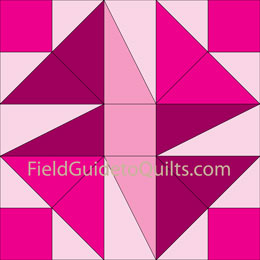 Crazy Ann Crazy Ann
Gutcheon, 1973 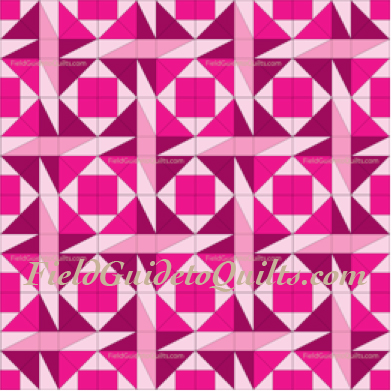 Crazy Ann (Gutcheon) Of the many color combinations quilters have used to gussy up Pinwheel Square (above), one of the most interesting is the four-color version called Crazy Ann. Crazy Ann (Gutcheon) Of the many color combinations quilters have used to gussy up Pinwheel Square (above), one of the most interesting is the four-color version called Crazy Ann.
Author Barbara Brackman credits the design to The Perfect Patchwork Primer (Gutcheon, 1973).
As a whole quilt, the block creates a candy-cane windowpane. We like it a lot.
|
|
Perpetual Motion
   
   
   
   
Perpetual Motion 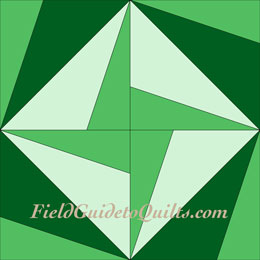 Perpetual Motion Perpetual Motion
Cabot, 1936
The Chicago Tribune published this block by designer Nancy Cabot in 1936. |
|
|
|
 |
|
 Crazy Ann
**&
Crazy Ann
**&













 Dove in the Window
Dove in the Window
 Lend & Borrow
Lend & Borrow
 Lend & Borrow
Lend & Borrow
 Flamingos in Flight
Flamingos in Flight



 Victory
Victory

 Arrowhead Puzzle
Arrowhead Puzzle Pinwheel Square
Pinwheel Square

 Crazy Ann
Crazy Ann
 Perpetual Motion
Perpetual Motion